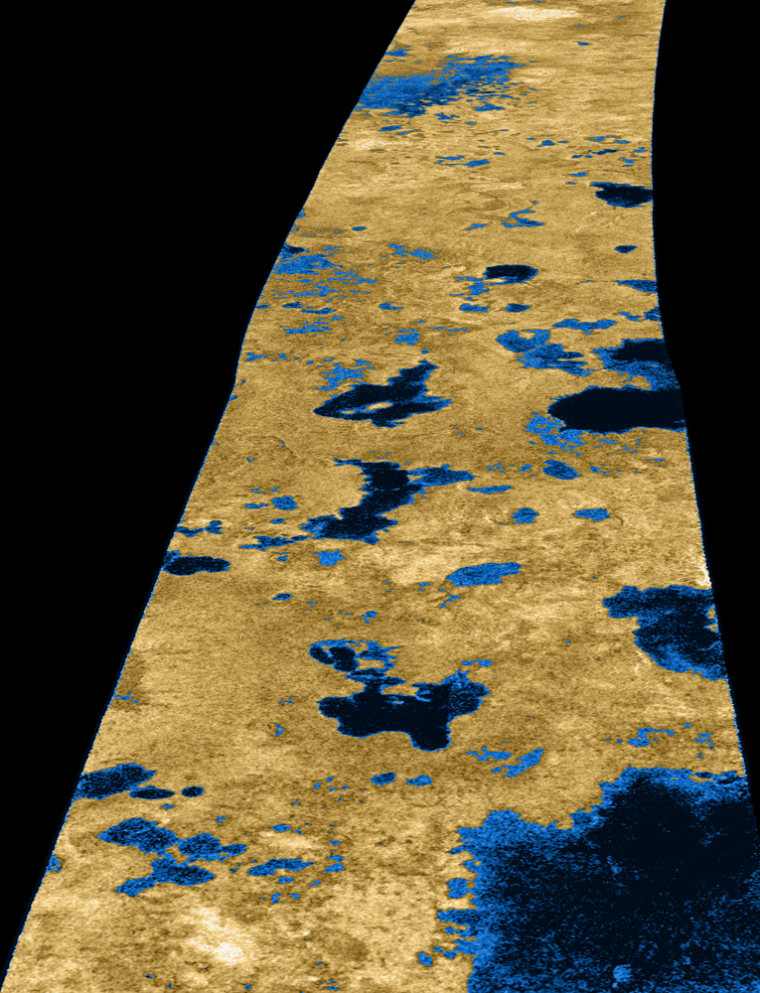Images shot last summer by the Cassini spacecraft provide the strongest evidence yet that Titan, a Saturnian moon and one of the most Earthlike celestial bodies in the solar system, is dotted with a multitude of liquid lakes.
"At the time we first announced it, we were like, 'Well, we think these are probably lakes,’ but that was about our level of confidence," said study team member Ellen Stofan of University College London and the California Institute of Technology. "I would say at this point, we've analyzed the data to the extent that we feel very confident that they are liquid-filled lakes."
Instead of water, however, the Titan lakes are likely filled with methane, and possibly even ethane — organic compounds that are gases on Earth but liquid on Titan's frigid surface.
"It's going to behave like water," Stofan said about liquid methane. "It's transparent just the way water is. So if you were standing by the shoreline, you would be able to see down to whatever pebbles or gunk that was on the bottom."
Titan is the only moon in the solar system to have a dense atmosphere with thin layers of methane and nitrogen clouds — a setup similar to that of early Earth. Atmospheric methane is destroyed by sunlight over time and must constantly be renewed. Scientists thus speculated that lakes or even oceans of methane might exist on, or just beneath, the moon's icy surface and that evaporation from these liquid bodies was replenishing the atmosphere. The first confirmation of this thinking came last July when Cassini's radar spotted more than 75 large, dark patches around the surface of the moon's northern pole.
"The lakes are basically black in the [radar] data, which is how a liquid would behave," Stofan said. Radar data alone wasn't enough, however. A very smooth deposit of fine soil would also appear black on radar, Stofan explained.
The clincher that the patches were liquid lakes came from looking at the surrounding terrain. Some of the patches appeared to be fed by sinuous channels, or "rivers," some more than 62 miles (100 kilometers) long. Others appeared to be contained within rimmed circular depressions, similar to crater lakes or volcanic calderas on Earth.
"The morphological evidence points completely away from it being a smooth deposit of soil or sediment. It's just not consistent," Stofan said. "Combining these two sets of data, it led us to feel very confident about the interpretation that they're actually liquid."
Slideshow 12 photos
Month in Space: January 2014
In a study published in Thursday's issue of the journal Nature, the researchers also suggest that the rivers and lakes are being filled by rainfall from methane clouds or by seepage from beneath the moon's surface.
"You can think of all the exotic words you want to call it — a 'methanofer' because it's not an aquifer. It's a subsurface methane table and not a water table," Stofan told Space.com.
The researchers predict that as the seasons progress, lakes in the winter hemisphere should expand while those in the summer hemisphere should shrink or dry up entirely.
Cassini is slated to perform 22 more Titan flybys, the next of which is scheduled for later this month.

